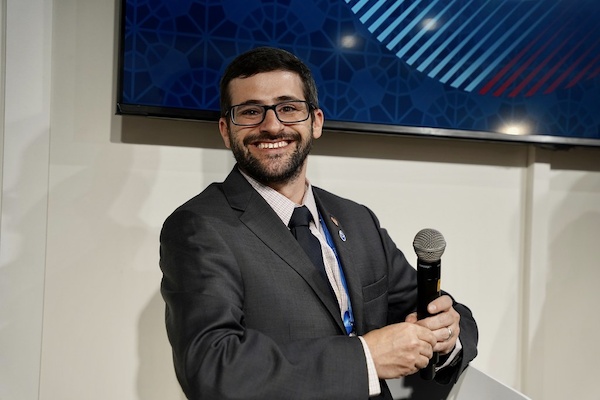Tom Di Liberto (MS, 2009)

Tom Di Liberto grew up on Long Island and has been fascinated by the weather since he was a young child. At SoMAS, Tom studied under professor Brian Colle in the Division of Atmospheric Sciences and worked with the School’s Storm Surge Research Group. His thesis dealt with storm surges affecting the New York metropolitan region. After earning his Masters degree in 2009, he joined the Climate Prediction Center of the National Oceanic and Atmospheric Administration (NOAA), where he worked as a meteorologist forecasting the weather for Africa, Central America, Hispaniola, and Central Asia with a focus on weather hazards that could affect food security. In addition, Tom conducted research on the use of satellite-derived rainfall estimates in these regions. His research group’s studies took on a whole new level of importance due to Super Storm Sandy. In 2013, Tom won the “America’s Science Idol” competition.
The “America’s Science Idol” competition was sponsored by the National Science Foundation’s Office of Legislative and Public Affairs, Discover Magazine, Popular Science and the Point of Inquiry Podcast. Patterned a bit after “American Idol”, the fun and engaging workshop was designed to help scientists and engineers communicate with non-technical colleagues and audiences. In winning, Tom earned variety of opportunities to visit and link with science communication groups around the country.
Tom's skills in science communications led him to roles as a public affairs specialist at in the Office of Communication at the National Oceanic and Atmospheric Administration (NOAA). There, he produced the animated series Teek and Tom Explore Planet Earth, the first of its kind at NOAA. Tom had been the emcee of every United States Center at the United Nations Conference since 2015, running the most recent U.S. Center at COP29 in November of 2024.
Tom is now the Media Director for Climate Central, and continues to speak out against cuts to NOAA and employee terminations in order to keep weather research and services alive.
